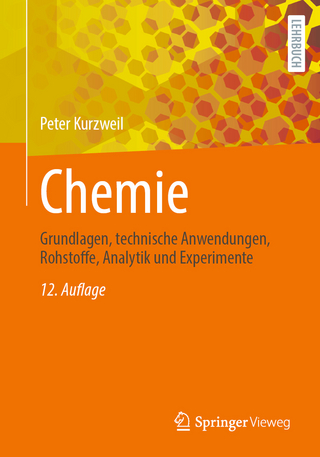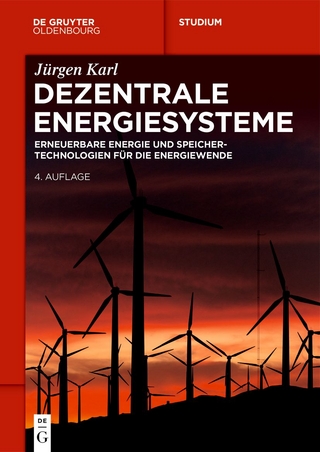
Risk Assessment
John Wiley & Sons Inc (Verlag)
978-0-470-89203-9 (ISBN)
- Titel erscheint in neuer Auflage
- Artikel merken
Lee T. Ostrom, PhD, has worked in the fields of risk assessment, industrial safety, ergonomics, and human factors for over thirty years. A Certified Professional Ergonomist and Certified Safety Professional, he has been an assistant professor and degree coordinator for the industrial technology degree program at the University of Idaho. He is the author of Creating the Ergonomically Sound Workplace. Cheryl A. Wilhelmsen is an assistant professor at APUS/AMU and consults with NASA Ames in the area of aviation inspection. In her thirty year career, she has conducted hundreds of ergonomic assessments and risk assessments from offices to nuclear hot cells. She has a master's of science in industrial technology from the University of Idaho and is currently a PhD.ABD.
List of Figures xiii List of Tables xvii Acknowledgments xxi 1 Introduction to Risk Assessment 1 1.1 Terminology, 6 1.2 Performing Risk Assessments, 6 1.3 Risk Assessment Team, 7 1.3.1 Team Approach, 7 1.3.2 Team Representatives, 10 References, 11 2 Risk Perception 13 2.1 Knowledge Level, 15 References, 20 3 Risks and Consequences 21 3.1 Introduction, 21 3.2 Risk and Consequence, 21 3.3 Credible Consequences, 24 3.4 Summary, 25 References, 25 4 Ecological Risk Assessment 26 4.1 Introduction, 26 4.2 Deep Water Horizon, 29 4.3 Love Canal, 34 4.4 Minimata Methylmercury, 36 4.5 Agent Orange, 38 4.6 Seveso, Italy, 40 4.7 Risk of Ecological Disasters, 41 4.8 Ecological Risk Assessment, 41 4.8.1 Example Ecological Risk Assessment, 45 4.9 Summary, 53 References, 54 5 Task Analysis Techniques 56 5.1 What is Task Analysis? 56 5.2 Why a Task Analysis? 57 5.3 When to use Task Analysis? 58 5.4 Task Analysis Process, 58 Step 1: Data Collection Information, 59 Step 2: Recording the Data, 60 Step 3: Data Analysis, 63 References, 63 6 Preliminary Hazards Analysis 64 6.1 Description, 65 6.1.1 Process of Preliminary Hazards Analysis, 66 6.1.2 Hazard Class, 69 6.1.3 Examples of Hazardous Energy Sources, 69 6.2 Using Process Hazard for Procedure Design, 72 6.2.1 Purpose of Process, 72 6.2.2 Initial Basic Procedure Steps, 72 6.2.3 Analysis, 73 6.2.4 Using the Results of the Analysis, 73 6.3 Using PHA for Preliminary Product Design, 75 Step 1: Determine Functions of the Crib, 76 Step 2: Determine Required/Critical Specifications, 76 Step 3: Determine Major Systems/Subsystems of the Crib, 76 Step 4: Determine Important Components of Each System/Subsystem, 77 Step 5: Determine Operating Modes of the Crib, 77 6.4 Summary, 79 References, 79 7 Primer on Probability and Statistics 81 7.1 Introduction, 81 7.2 Probability Theory, 85 7.3 Combining Probabilities, 87 7.4 Conditional Probability, 88 7.5 Probability Distributions, 89 7.6 Using Probability, 92 7.7 Summary, 95 References, 96 8 Developing Probabilities 97 8.1 Risk Assessment Data, 97 8.1.1 Introduction, 97 8.1.2 Hardware Failure Rate Data, 97 8.1.3 Manufacture, 98 8.1.4 Historical Data, 98 8.1.5 Government and Military Handbooks, 98 8.1.6 Commercial Data Sources, 98 8.1.7 Operational Data and Testing, 99 8.1.8 Failure Rate Calculations, 100 8.1.9 Accident Data, 103 8.1.10 Monte Carlo Simulation, 106 8.1.11 Human Error Probabilities, 107 8.1.12 Delphi Method, 108 8.1.13 Summary of the Delphi Process, 115 8.2 Overall Summary, 116 References, 116 9 Failure Mode and Effects Analysis 118 9.1 Introduction, 119 9.1.1 Description, 119 9.1.2 Why is a Failure Mode and Effects Analysis Effective? 119 9.1.3 Types of Failure Mode and Effects Analyses, 120 9.1.4 Failure Mode and Effects Analysis Process, 120 9.2 Summary, 134 References, 134 10 Human Reliability Analyses 135 10.1 Introduction, 135 10.1.1 Purpose, 135 10.1.2 Background, 135 10.1.3 Bounding the System, 136 10.1.4 Summary Points, 139 10.2 Task Analysis, 139 10.2.1 Summary Points, 140 10.3 HRA Modeling, 141 10.3.1 Summary Points, 143 10.4 Quantifying Human Error Probability (HEP), 144 10.4.1 Summary Points, 148 10.5 Documentation, 148 10.5.1 Summary Points, 149 10.6 Use of Human Reliability Analysis Techniques for Analyzing Procedures, 149 10.6.1 Procedure, 149 10.6.2 Procedure with Inspection Steps, 151 References, 151 11 Critical Incident Technique 153 11.1 Introduction, 153 11.2 Method, 153 11.3 Building on the Results of a Critical Incident Technique Session, 157 Step 1: Ramp Agent observes Anomaly on Aircraft Cargo Door, 158 Step 2: Ramp Agent Discusses Damage with Supervisor, 160 Step 3: Ramp Agent Discusses Decision to Report Damage to Maintenance Control with Supervisor, 160 Step 4: Ramp Agent Decides to Report Damage to Maintenance Control, 161 Step 5: Ramp Agent Shows Maintenance Control the Damage, 161 11.4 Summary, 162 References, 162 12 Event Tree and Decision Tree Analysis 163 12.1 Event Trees, 163 12.1.1 Case Study, 167 12.2 Decision Trees, 168 12.2.1 Problem, 170 12.3 Case Study: Chernobyl, 175 12.3.1 Analysis of the Event, 178 12.3.2 Event Tree Analysis, 179 12.4 Summary, 180 References, 180 13 Critical Function Analysis 181 13.1 Introduction, 181 13.1.1 United Flight 232, 183 13.1.2 Air Canada Flight 143, 185 13.2 Critical Functions, 187 13.3 Conducting a Critical Function Analysis, 190 13.3.1 Critical Function of a Small Business, 192 13.3.2 Chemical Reactor Critical Function Analysis, 193 13.3.3 Emergency Management Planning, 195 13.4 Summary, 197 References, 201 14 Basic Fault Tree Analysis Technique 203 14.1 History, 203 14.2 Application, 204 14.3 Fault Tree Construction, 205 14.4 Event Symbols, 205 14.5 Logic Gates, 207 14.6 Analysis Procedure, 208 14.6.1 Defining the Problem, 208 14.6.2 Constructing the Fault Tree, 209 14.6.3 Analyzing the Fault Tree, 210 14.6.4 Documenting the Results, 211 14.7 Examples of Fault Tree Analysis, 211 14.7.1 Simple Example, 211 14.7.2 Modeling Success Using Fault Tree Analysis, 214 14.7.3 Fault Tree Analysis for Use in Accident Investigation, 215 14.8 Summary, 221 References, 221 15 Probabilistic Risk Assessment 223 15.1 Description, 223 15.2 Requirements of the Risk Assessment, 224 15.3 Simplified PRA Procedure, 224 15.4 Hazard Identification and Evaluation, 225 15.5 Qualitative Risk Assessment, 225 15.6 Quantitative Risk Assessment, 226 15.7 Uses of PRA, 229 15.8 Conclusion, 230 References, 230 16 Qualitative and Quantitative Research Methods Used in Risk Assessment 231 16.1 What is Qualitative Research? 231 16.1.1 Narrative Research, 232 16.1.2 Phenomenological Description, 233 16.1.3 Grounded Theory Research, 234 16.1.4 Ethnographic Research, 235 16.1.5 Case Study Research, 236 16.2 Quantitative, 238 16.3 Risk Assessment Perspective, 240 16.3.1 Aviation Study, 241 16.3.2 Design, 245 16.4 Conclusion, 247 References, 247 17 Vulnerability Analysis Technique 249 17.1 Introduction, 249 17.2 Case Study 1: Intruder, 251 17.3 Case Study 2: Multipurpose Academic Building, 254 17.3.1 Methods of Collecting Information, 255 17.3.2 Task Analysis, 257 17.3.3 Risk Assessment, 259 Reference, 276 18 Developing Risk Model for Aviation Inspection and Maintenance Tasks 277 18.1 Introduction, 277 18.2 Failure Mode and Effect Analysis, 277 18.3 Event Tree and Fault Tree Analysis, 279 18.4 Summary, 290 References, 291 19 Risk Assessment and Community Planning 292 19.1 Introduction, 292 19.2 Example Analysis, 296 19.2.1 Preliminary Hazard Analysis for Site A, 298 19.2.2 Preliminary Hazard Analysis for Site B, 298 19.2.3 Preliminary Hazard Analysis for Site C, 303 19.3 Summary, 307 References, 307 20 Risk of an Epidemic 309 20.1 Introduction, 309 20.2 Plague Example, 311 20.3 Tularemia Example, 312 20.4 Anthrax Example, 312 20.5 Ebola Example, 313 20.6 Smallpox Example, 313 20.7 TB Example, 314 20.8 Typhoid Fever Example, 314 20.9 Influenza Example, 315 20.10 Example of Measles, Mumps, and Rubella, 315 20.11 Polio Example, 316 20.12 Pertussis (Whooping Cough), 316 20.13 Cholera Example, 317 20.14 Summary, 318 References, 318 21 Process Plant Risk Assessment Example 319 21.1 Introduction, 319 21.1.1 Phillips Houston Chemical Complex, 319 21.1.2 BP Texas City Refinery, 323 21.2 Example Analysis, 327 21.2.1 Preliminary Hazard Analysis, 331 21.2.2 Sample Failure Mode and Effect Analysis, 334 21.2.3 Sample Event Trees, 334 21.2.4 Sample Fault Trees, 334 21.2.5 Sample PRA, 334 21.3 Summary, 344 References, 344 22 Industry Specific Case Studies 346 22.1 Case Study 1: Overview, 346 22.1.1 Introduction, 347 22.1.2 Approach, 349 22.1.3 Summary, 354 22.2 Case Study 2: Overview, 354 22.2.1 Introduction, 355 22.2.2 Approach, 356 22.2.3 Conclusions, 359 22.3 Case Study 3: Overview, 362 22.3.1 Introduction, 363 22.3.2 Purpose Statement, 363 22.3.3 Airport Security Risk Assessment Process, 364 22.3.4 Summary, 369 22.4 Case Study 4: Overview, 369 22.4.1 Introduction, 369 22.4.2 Food Safety Risk Assessment, 371 References, 375 23 Restaurant Risk Assessment Case Study 376 23.1 Introduction, 376 Glossary 381 Acronyms 386 Index 389
| Verlagsort | New York |
|---|---|
| Sprache | englisch |
| Maße | 165 x 235 mm |
| Gewicht | 802 g |
| Themenwelt | Naturwissenschaften ► Chemie ► Technische Chemie |
| Technik ► Elektrotechnik / Energietechnik | |
| Wirtschaft ► Betriebswirtschaft / Management ► Allgemeines / Lexika | |
| ISBN-10 | 0-470-89203-X / 047089203X |
| ISBN-13 | 978-0-470-89203-9 / 9780470892039 |
| Zustand | Neuware |
| Haben Sie eine Frage zum Produkt? |
aus dem Bereich



